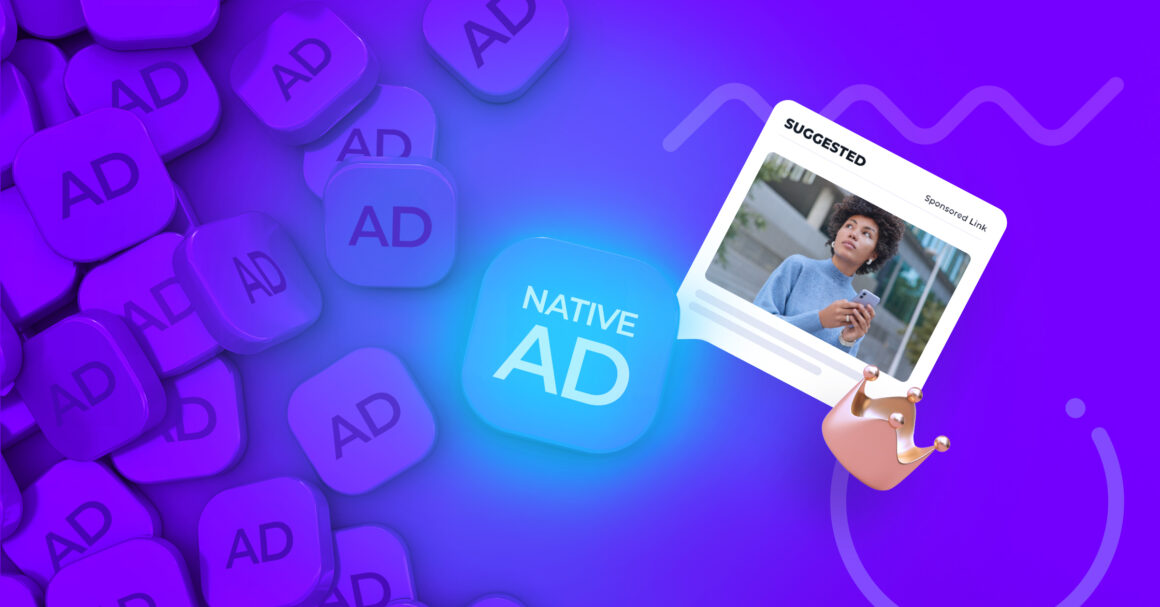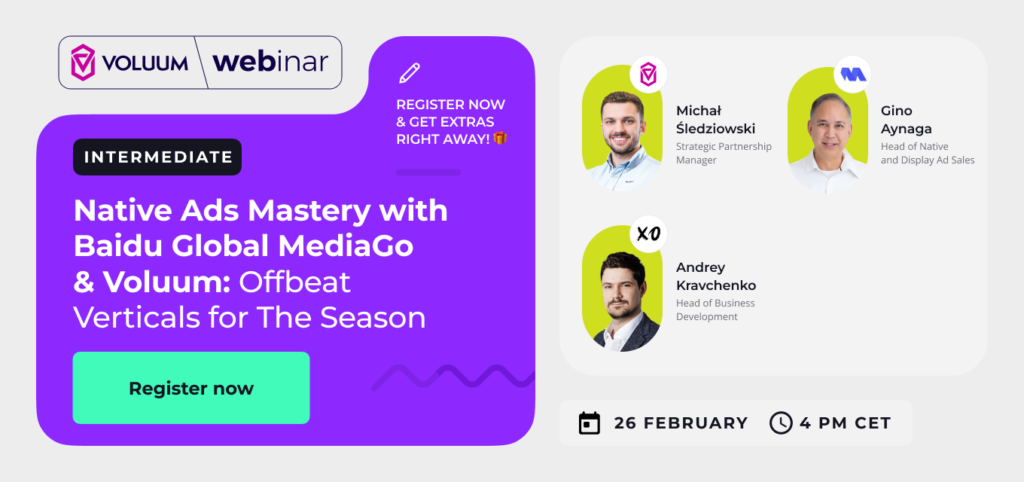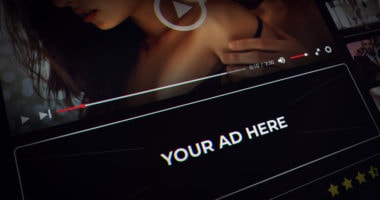Content is king. Maybe you’re tired of that sentence, or maybe you’re feeling a bit stuck when it comes to writing said content. One thing is for sure, though: you can’t deny it, even if you tried. I mean, you just turned to a piece of content to understand how to create content to make your native ads better… See what I did there?
Native advertising has become an essential part of the digital marketing landscape, and for good reason. Native ads blend seamlessly with the surrounding content; they’re sleek and seamless. They also seem to annoy people less. However, native ads are captivating and effective only when the content is truly amazing. Writing content is a challenging task for many, as it’s an art of balance: you need to deliver attention-grabbing assets while staying relevant to the customer.
In this article, we’ll explore how to write good content for native ads, covering topics like the basics of native advertising, understanding your audience, and the components of content from headlines to CTAs. Stay tuned.
The basics of native advertising
Have you noticed that it seems like there are fewer ads on the Internet than, let’s say, ten years ago? No irritating banners, no full-page pop-ups.
The reality is that the number of ads increases — you just don’t realize you are looking at ads. This can be attributed to native ads.
Native is a form of advertising where the ad blends in with the content of the platform it appears on. These ads follow the function and form of the content they’re placed alongside — think in-feed ads on social media or sponsored content on news websites.

The idea behind it is to make these ads more relevant to the audience so they might feel more inclined to engage with them. If done correctly, it becomes a powerful tool for advertisers.
Native ads have become increasingly popular in recent years as consumers have become more adept at ignoring traditional banner ads and other forms of disruptive advertising.
Native ads are viewed 53% more than other types of display ads. A lot of publishers are also fond of native ads because they don’t disrupt the user experience for people visiting their page.
This form of advertising is especially fitting for brands, and with good reason. Since they can appear on websites as “recommended content,” native ads can boost the credibility of the brand and help you position your company and product as a market leader.
Product owners should look into it too. Making good use of advertorial landing pages (the ones that are designed to look like organic news stories) gives plenty of space to go on about the benefits of your product.
First, understand your audience
For your content to be effective, it needs to be based on a good understanding of who you’re delivering for. The ads need to be relevant to the people you’re trying to reach and provide value to them. This requires a deep understanding of their needs, preferences, and behaviors. To do this, conduct market research and gather data on your target, including demographics, interests, and behavior patterns.
- Use Google’s ‘People also ask’ section to get a better understanding of what is going on.

- Use services such as AnswerThePublic.com.
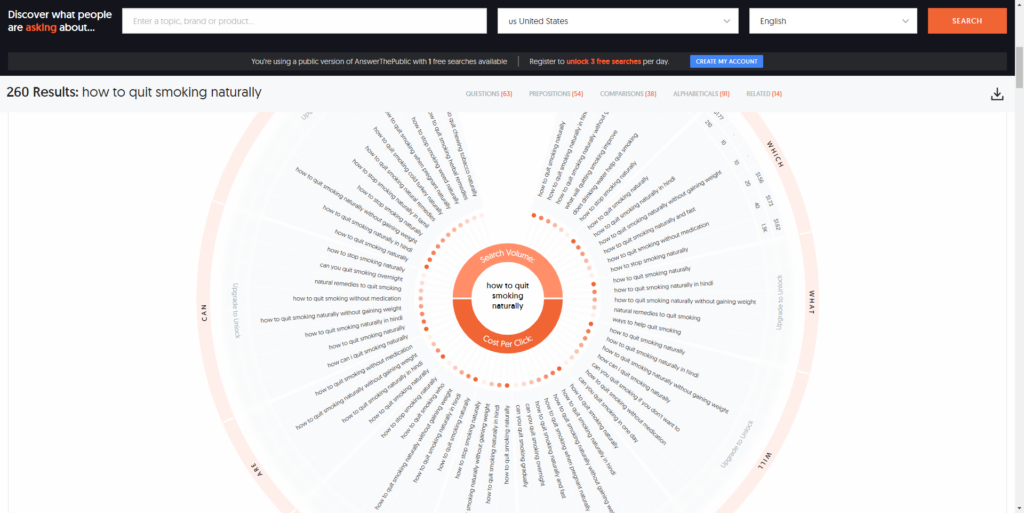
- Look at forums & social media channels to learn what people discuss about.
Second, understand the context
Native ads are always contextual. Their tone of voice and creatives should match the style of a publisher’s page.
If your ad appears on a news portal, write a headline in a matching style:
- New study suggests the best way to quit smoking
- Quitting smoking was hard, until now
- Statistically, it’s the best thing you can do to quit smoking
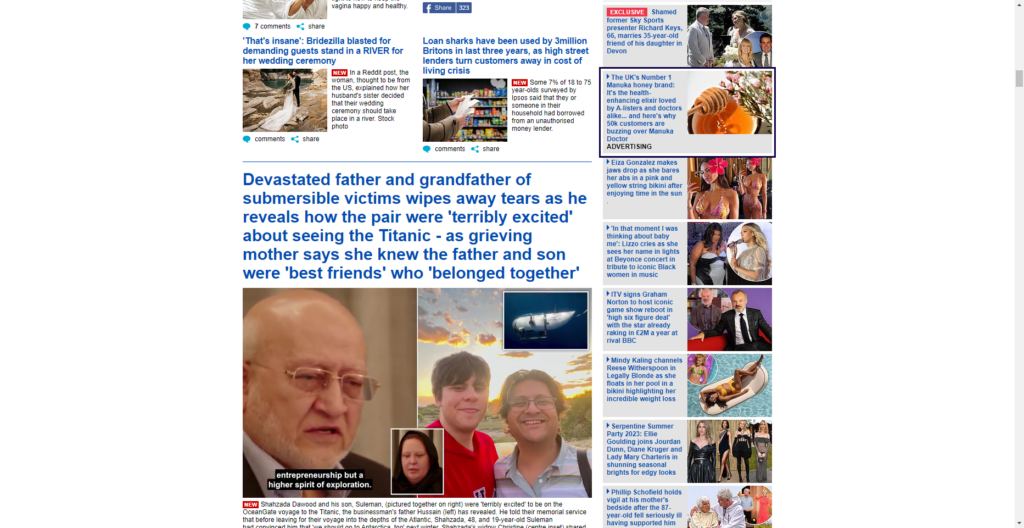
If your ad appears on social media, you can be more catchy and creative with your headlines:
- You won’t believe what helped these people quit smoking
- The surprising product that helped millions quit their nicotine addiction
- What is this the best alternative to smoking a cigarette?
- 10 myths surrounding quitting smoking addiction
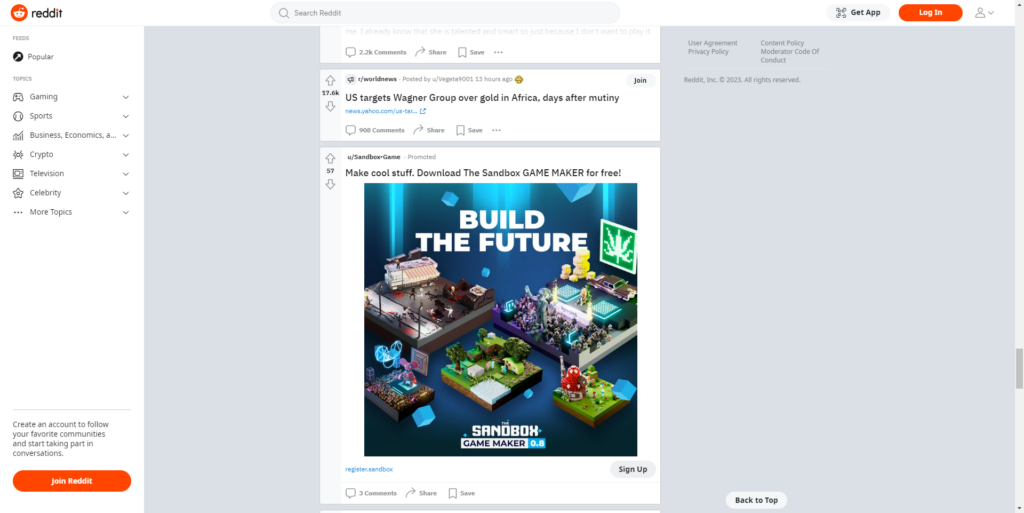
Third, great headlines need to be followed by great content
Native advertising is most effective when it provides value to the audience. Actual value. Use your market research insights to address the most common doubts and problems your audience might have.
For example, you may learn that the hardest thing to do when quitting smoking is the oral fixation, social pressure from other smokers, or pure biological nicotine addiction.
Write how your offer helps to solve these problems.
Focus on making your content informative, educational, or entertaining, depending on the characteristics of your products, audience, and context.
Advertorial vs. Editorial pages
To understand how you are supposed to write, understand the difference between advertorial and editorial pages.
Editorial is a page that you see after clicking the typical headline on a news site. They provide content from journalists or photographs that are funny or informative, but most of all, don’t try to pitch a product to you.
An advertorial page is a native ad landing page that tries to look like an editorial page.
Consider the two headlines from the CNN website:
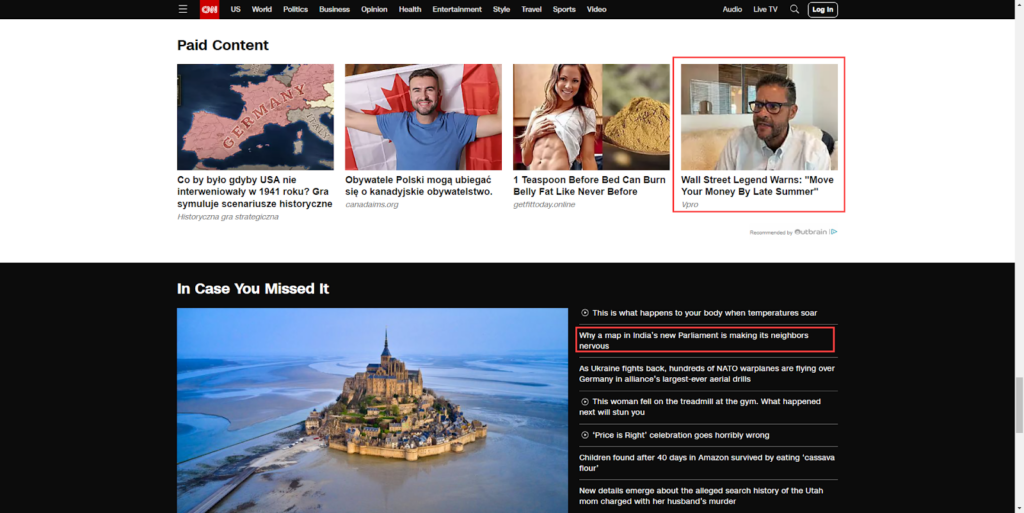
One of them leads to an editorial page, and the other to an advertorial page. Thanks to the big “Paid content” sign, you can easily tell which one is which, but in many cases, it is not that easy to spot.
Optimal length
Remember: your content doesn’t have to be short!
Native is a different beast from other types of ads, which need to be flashy and concise.
Native advertisers often use longer content to:
- Filter out uninterested parties
- Defuse any counterarguments
- Build a positive image of their brand
- Provide information on a product
You can’t do this effectively in two sentences. Sometimes your content needs to be scrollable because editorial pages often are!
Social proof and testimonials
Adding social proof to your native ads is a great way to enhance the value of your service in the eyes of potential users. Customer reviews, case studies, or endorsements from influencers or industry experts show that your product is reliable, as well as effective. Testimonials help you establish your brand as a leader in the industry and can be useful in convincing skeptics to give it a go.
If you don’t have any reviews yet, get them. Ask your friends and friends of coworkers to try out your product and write an honest review. Honesty here is key. No one is going to believe crazy claims even in reviews.

Then study your reviews. Maybe there’s a pattern, a certain benefit you never gave much thought to, that everyone is raving about. So, there are really two benefits to reviews. One is that you can quote them directly in your ads, which could make them look less curated and more honest. Two, they are a great inspiration for what to focus on in your content when…
Fourth, end your content with a strong CTA
This is one of my favorite tips. Conveying to users what action you expect them to take can be very effective in driving engagement. It’s all going to be in the CTA, which your ad just has to have. That CTA is the last stop before the client decides to purchase, sign up, or do nothing.
There are different schools about where you should put your CTAs. Most suggest that you should do this above the fold, so on the part of the web page that is visible without scrolling. But more cunning native advertisers put them at the bottom to make sure that the person who clicked it has read the entire content.
Call-to-action buttons should be motivators; they’re the final push. So, creating a senseof scarcity or urgency works well here. Use language that conveys that, such as:
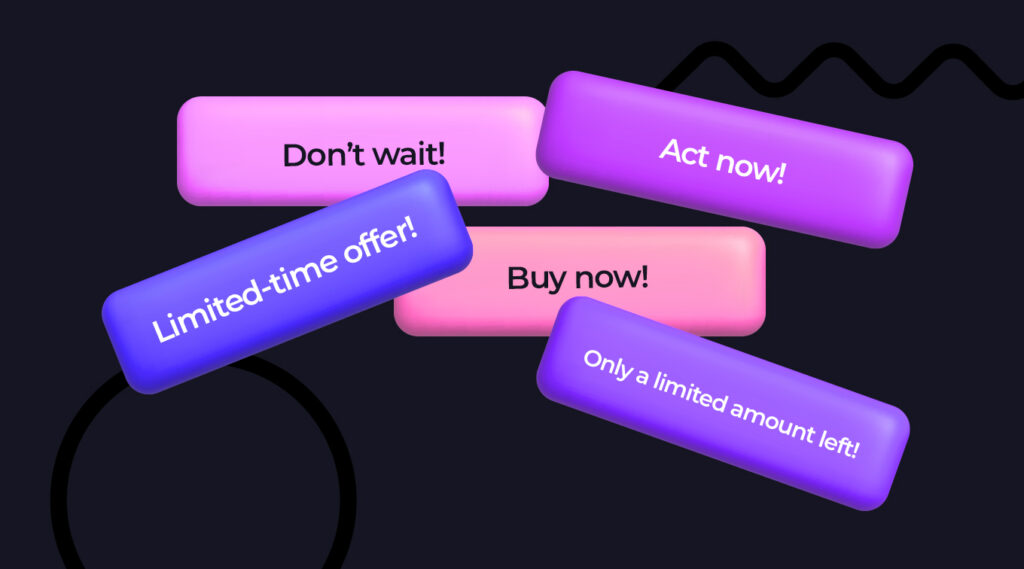
Matching the CTA with the content is crucial to making it stick, and you should get creative with them. How? Let’s say you want people to sign up for a newsletter. You could go for a simple CTA like “Sign up now!” or “I need to know everything!”. Okay, maybe that’s not the perfect example, but you get it. There’s more to CTAs than just “buy now.” And keep CTAs very short, maybe four words max. Remember, they only need to guide the user to completing an action.
Fifth, test what works
What many guides, videos, and webinars won’t tell you is that every ad and every variation has to be tested over and over again before you start polishing and optimizing. And then maybe after a while, you’ll discover what works. But not before trying many approaches and discarding most of them. The art of advertising lies in knowing this and observing user behaviors very, very closely.
With an ad tracking platform like Voluum, A/B testing is going to be easy and scalable. You already know that for this type of ad format, one version of an ad is not enough, and a lot of times what you think works might not in the end. And as time goes by and the number of ads and landers and combinations of ads and landers grows, that process of testing is going to become crucial in determining which ones are profitable and which need improving.
All that comes with tons and tons of data. An unimaginable amount of data. Luckily, Voluum was made to work with mountains of data efficiently and in real-time. Later on, those reports can be broken down to the nitty-gritty so no details will ever escape you.
How should you really know if Voluum is right for advertisers in native? All the proof lies in this case study.
Great content needs a great conclusion
To sum up, when preparing content for your native ads, just think about these simple points:
- Understand your audience
- Keep it simple
- Focus on benefits
- Have a clear call to action
- Use cool visuals
- Test and optimize
I’m sure that by always putting your audience first, you’ll be able to deliver content that is memorable.

